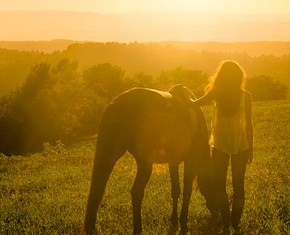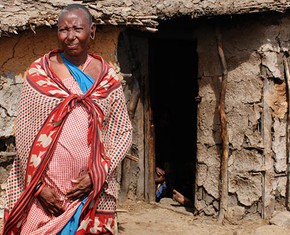The views expressed in our content reflect individual perspectives and do not represent the authoritative views of the Baha'i Faith.
Many have heard the story about the famous violinist walking the streets of New York. A tourist on a self-guided sightseeing tour wanted to see the world’s best-known concert hall. He did not recognize the musician and stopped to ask, “How can I get to Carnegie Hall?”
Heifetz replied, “Practice, practice, practice!”
These two men stood on common ground geographically but not psychologically. They had two entirely different mindsets. Their misunderstanding arose from divergent identities and purposes.
We tend to respond to life from the perspective of our current mental models. We live in a society that insists we declare a personal identity, often at the expense of oneness. The Baha’i challenge resets the challenge, asking that we actually prefer  others above ourselves. What a re-assortment of cultural norms, for many! When others’ needs and interests become as important as our own, this redefines purpose. Oneness becomes authentic on a human level.
others above ourselves. What a re-assortment of cultural norms, for many! When others’ needs and interests become as important as our own, this redefines purpose. Oneness becomes authentic on a human level.
In the natural world, oneness shapes not only our mood but our own life force. No matter where we live, when we stand in the sunlight and breathe deeply the scent of the cedar, baobab, acacia, birch or willow tree, a universal calm descends as we exchange the gift of oxygen for a gift of value to those trees — carbon dioxide. By simply breathing, we are one with the trees or humans beside us. Guy Murchie, in his book The Seven Mysteries of Life, extends the example to the proverbial cow, literally one with the field as she simultaneously grazes, fertilizes, and mows it.
On the civil front, peace has proven more sustainable in civilizations with innate sensitivity to the interconnectedness of all people and living things. We associate this fact with indigenous cultures, but growing awareness has also influenced the emergent sense of interconnectedness in urban populations. A Dewar Research Poll showed that violence against women decreased by 70% in just eight years in the UK as awareness campaigns increased. The International Day for the Elimination of Poverty Against Women, an International Day to end Apartheid and other movements have illustrated that patience moves civilization in the direction of helping humanity recognizing its oneness, for those willing to wait. Nelson Mandela’s acceptance as a worldwide figurehead illustrated this principle.
In current hot spots such as Iraq and Syria, where we mourn the loss of life due to human rights tragedies or internal and external conflicts, these reactions almost always sputter up from recurring schisms between groups with opposing self-definitions and missions. Still, worldwide, more effective policies, laws and plans exist than ever before to break down the barriers that create opposition and yet to allow for unique distinctions–just as the birch, the baobab and the cedar emit sweet aromas that do not detract from the oneness they inherently represent. No one tree insists that the others conform to their nature, and we humans can appreciate their differences and our interconnectedness with them without chopping them down!
We face the challenge of ensuring the spirit of oneness personally, of course, every moment of our lives. For example, when I see hitchhikers, I have to check the impulse to look at my watch, see whether I am late or not and size up the safety factor, imagining their story in my mind. Is it based on a bias against a certain age group or style of dress? Once we do slow down to invite the stranger or the traveler into our hearts, and they begin to talk, often I am struck by how similarly their life’s path parallels that of a friend or family member who I hope would discover a loving stranger in a moment of need. What opportunity for oneness do I miss when I am in a rush and pass them by?
All these examples–the classroom students, the physicist, the policymaker, and the person on the street—offer options for prioritizing oneness, even at the cost of personal time, convenience, preconceived notions and social or political identity. In these times, many of us find a deep desire to look inwardly and bend our personal energies toward the goals of this interesting age. The Baha’i Writings vividly capture the essence of that age:
Love revealeth with unfailing and limitless power the mysteries latent in the universe. Love is the spirit of life unto the adorned body of mankind, the establisher of true civilization in this mortal world, and the shedder of imperishable glory upon every high-aiming race and nation. – Abdu’l-Baha, Selections from the Writings of Abdu’l-Baha, p. 27.
If we each aim higher to honor that binding force, so might our cities and cultures and nations. May our actions be prayers that bring humanity closer to that reality.
















Comments
Sign in or create an account
Continue with Googleor